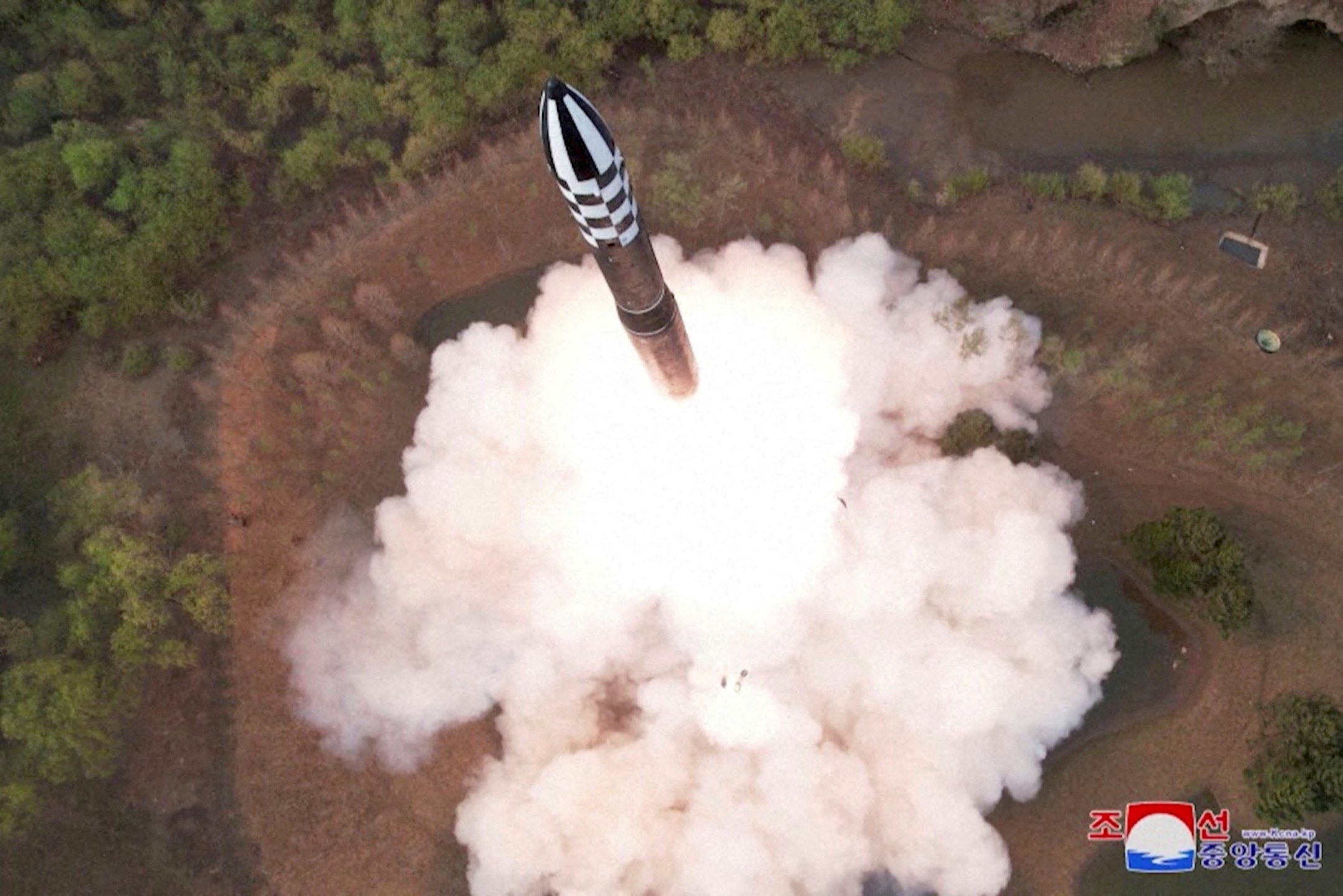SUMMARY
This is AI generated summarization, which may have errors. For context, always refer to the full article.

SEOUL, South Korea – North Korea made a failed attempt at launching its first spy satellite on Wednesday, with the booster and payload plunging into the sea, North Korean state media said, a setback in its pursuit of a space program that dates to the 1990s.
The United States, South Korea and the West have condemned the North’s space vehicle launches for using ballistic missile technology, which it is banned from doing under United Nations Security Council resolutions.
The following is a timeline of the North’s space program, satellite launches, and development of rocket technology.
August 31, 1998: North Korea kicks off its space program by launching a Kwangmyongsong-1 satellite on a Paektusan rocket from the Tonghae Satellite Launching Ground near the east coast. Pyongyang declares it a success, but U.S. officials said it broke up over the Pacific Ocean.
April 5, 2009: Then-leader Kim Jong Il oversees the launch of the Kwangmyongsong-2 satellite from the Tonghae complex, but it once again fails and crashes in the ocean. State media suggest that 14 North Korean soldiers were killed during the launch.
April 13, 2012: The Kwangmyongsong-3 satellite is launched from the newly completed Sohae Satellite Launching Station in the western region. Foreign media are invited to observe the launch, which once again is unsuccessful.
Decembr 12, 2012: North Korea successfully launches the Kwangmyongsong-3, putting an object in orbit. While the North claimed it to be an observation satellite, it is not believed to carry a functioning transmission system.
April 2013: North Korea establishes the National Aerospace Development Administration (NADA) which purports to pursue space exploration for peaceful purposes. The reconnaissance satellite launch on Wednesday was conducted by NADA.
February 7, 2016: North Korea sends up a satellite. The United States calls it a disguised test of an engine powerful enough to launch an ICBM. International observers said the satellite appears to be under control, but there is lingering debate over whether it sent any transmissions.
August 24, 2016: Hyon Kwang-il, director of scientific research at the North’s National Aerospace Development Administration says “our aerospace scientists will conquer space and definitely plant the flag of North Korea on the Moon.”
June 23, 2016: North Korea says it successfully tested an intermediate range ballistic missile (IRBM), with a range of 2,000 to 3,400 miles (3,200-5,400 km).
July 4, 2017: North Korea tests an ICBM for the first time, saying the missile can reach the continental United States. The missile, Hwasong-14, is tested again three weeks later, this time in a night launch.
August 29, 2017: North Korea fires an intermediate range missile over northern Japan, prompting warnings to residents to take cover. The missile falls into the Pacific Ocean, but sharply raises tensions in the region.
January 13, 2021: During a party congress, leader Kim Jong Un reveals a wish list that includes developing military reconnaissance satellites.
December 19, 2022: North Korea said it has conducted a “final phase” test for the development of a spy satellite at the Sohae launch station to check satellite imaging, data transmission and control systems.
March 16, 2023: North Korea test launches the Hwasong-17 ICBM, its biggest missile, which some analysts believe incorporates technology for space launch vehicles.
May 25, 2023: Construction and preparations at the Sohae Satellite Launching Station is moving forward at a “remarkable pace,” a US-based think tank says.
May 29, 2023: North Korea notifies Japan and the International Maritime Organization of a plan to launch a satellite between May 31 and June 11.
May 30, 2023: Ri Pyong Chol, the North’s highest-ranking military official after leader Kim, said joint military drills by the United States and South Korea required Pyongyang to acquire the “means capable of gathering information about the military acts of the enemy in real time”.
May 31, 2023: North Korea attempts to launch the satellite, but the rocket plunged into the sea “after losing thrust due to the abnormal starting of the second-stage engine,” state media KCNA reported.
– Rappler.com
Add a comment
How does this make you feel?
There are no comments yet. Add your comment to start the conversation.